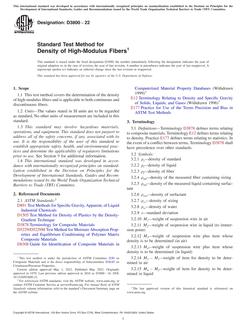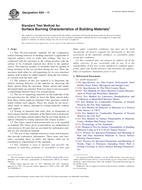1.1 This practice describes a model for establishing ISO 17025-compliant uncertainty budgets for the chemical analysis of metals, ores, and related materials. It is based on applying the Horwitz function to widely accepted, diverse interlaboratory test programs, such as interlaboratory testing of standard test methods and proficiency testing programs. This function expresses the interlaboratory standard deviations that can be expected for any concentration level as competent laboratories use optimized test procedures to analyze any matrix for any analyte. It may be used to set aim uncertainties against which to plan new standard test methods and to assess the performance of existing test methods.
1.2 An optimized test procedure is one in which the final test results are at least equivalent to alternative, state-of-the-art procedures. In the analytical chemistry community, this means that calibrations are carried out, verified, and controlled such that the final test results have no systematic, detectable bias. The elimination of sources of bias is a key responsibility of any person who designs analytical test methods. Hence, an analytical test method that contains systematic, measurable sources of bias would probably not be accepted as an ASTM test method and its performance data would probably not be in compliance with the procedures described in this practice.
1.3 The uncertainty budget model described in this practice is based on the assumption that, in a normally distributed, bias-free environment, measurement uncertainty will improve by the square root of two with each removal of a significant source of variation. Conversely, it is assumed that measurement uncertainty will worsen by the same amount with each addition of a significant source of variation. Furthermore, this model assumes that the hierarchy of increasing variation in any composition-based measurement system begins with calibration and progresses through control to intralaboratory standard deviation to interlaboratory standard deviation to product sampling for conformity assessment. Therefore, aim values for the expected uncertainties at any process step can be predicted using this model.
1.4 When using this model, the aim values generated using this model must then be validated, verified, and documented as part of the development and interlaboratory testing of any new test method, sampling practice, and product specification, as appropriate. It is also expected that each laboratory that elects to use that standard test method will generate data to show that the standard test method complies with the published uncertainties developed during interlaboratory testing of the standard test method. The principles in this practice can also be applied to the development of test methods used to determine the composition of other materials.
1.5 This standard does not purport to address all of the safety concerns, if any, associated with its use. It is the responsibility of the user of this standard to establish appropriate safety and health practices and determine the applicability of regulatory limitations prior to use.
Product Details
- Published:
- 11/10/2001
- Number of Pages:
- 5
- File Size:
- 1 file , 41 KB


